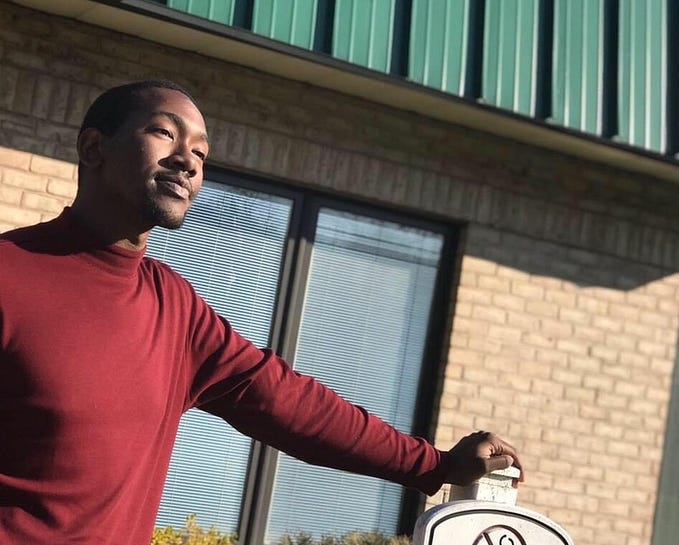The New Jim Crow: Mass Incarceration in the Age of Colorblindness (book review)

Michelle Alexander is a civil rights lawyer, legal scholar, and author who wrote “The New Jim Crow: Mass Incarceration in the Age of Colorblindess.”
While working on racial justice advocacy at the American Civil Liberties Union, she witnessed numerous injustices (racial profiling, police brutality, barriers to reentry for felons, patterns of police enforcement in poor neighborhoods), which gradually convinced her of an insidious reality.
She discovered that the spirit of Jim Crow still existed systemically through the mass incarceration of poor people and people of color, specifically black men.
Rather than believing in the conventional viewpoint that racial discrimination had ended with the civil rights reforms of the ‘60s, she found that the War on Drugs is deceptively harmful law, only pretending to be neutral, often unfairly enforced in “the age of colorblindness.”
It is a legal campaign that serves, not in the interest of the community, but rather as a modern-day means of social control. Rather than lowering drug addiction and abuse, this war has siphoned money out of education and health services, while ruining the lives of poor people of color.
She wrote of mass incarceration as the new “racial caste system,” one that is perpetuated against black communities, forcing them into inferior social positions.
Racism is adaptable and molds into the systems of the present — although often concealed under the guise of neutrality.
Unlike the past injustices of slavery and Jim Crow, during modern times, “through a web of laws, regulations, and informal rules, all of which are powerfully reinforced by social stigma, they [black and poor people] are confined to the margins of mainstream society and denied access to the mainstream economy.”
During the colonial period, black people were shipped to America as cheap labor, barely able to survive if they did survive, exploited, forced into suffering and pain and daily embarrassment, coerced into subservient, dependent roles, tortured, raped, stolen from land, culture, family, and God.
Once the Civil War ended, slavery had to be replaced by a new system of control.
“It was unclear what institutions, laws, or customs would be necessary to maintain white control now that slavery was gone. Nonetheless, as numerous historians have shown, the development of a new racial order became the consuming passion for most white Southerners. Rumors of a great insurrection terrified whites, and blacks increasingly came to be viewed as menacing and dangerous. In fact, the current stereotypes of black men as aggressive, unruly predators can be traced to this period, when whites feared that an angry mass of black men might rise up and attack them or rape their women. Equally worrisome was the state of the economy. Former slaves literally walked away from their plantations, causing panic and outrage among plantation owners. Large numbers of former slaves roamed the highways in the early years after the war. Some converged on towns and cities; others joined the federal militia. Most white people believed African Americans lacked the proper motivation to work, prompting the provisional Southern legislatures to adopt the notorious black codes. As expressed by one Alabama planter: ‘We have the power to pass stringent police laws to govern the Negroes — this is a blessing — for they must be controlled in some way or white people cannot live among them.’ While some of these codes were intended to establish systems of peonage resembling slavery, others foreshadowed Jim Crow laws by prohibiting, among other things, interracial seating in the first-class sections of railroad cars and by segregating schools. Although the convict laws enacted during this period are rarely seen as part of the black codes, that is a mistake. As explained by historian William Cohen, ‘the main purpose of the codes was to control the freedmen, and the question of how to handle convicted black law breakers was very much at the center of the control issue.’”
During the Reconstruction era, following the Civil War, many African Americans obtained political power, became literate, organized for social justice, undermining the racial caste system. Despite this era still being fraught with legal corruption, lack of land reform, and so on, there was a potential for African Americans to rise socially, economically, and politically.
“The backlash against the gains of African Americans in the Reconstruction Era was swift and severe. As African Americans obtained political power and began the long march toward greater social and economic equality, whites reacted with panic and outrage. Southern conservatives vowed to reverse Reconstruction and sought the ‘abolition of the Freedmen’s Bureau and all political instrumentalities designed to secure Negro supremacy.’ Their campaign to ‘redeem’ the South was reinforced by a resurgent Ku Klux Klan, which fought a terrorist campaign against Reconstruction governments and local leaders, complete with bombings, lynchings, and mob violence. The terrorist campaign proved highly successful.”
After the Jim Crow era was established, black communities were often abused, monitored, regulated, suppressed, and treated as inferiors under unequal laws.
“During the Jim Crow era, African Americans were denied the right to vote through poll taxes, literacy tests, grandfather clauses, and felon disenfranchisement laws, even though the Fifteenth Amendment to the U.S. Constitution specifically provides that ‘the right of citizens of the United States to vote shall not be denied . . . on account of race, color, or previous condition of servitude.’”
Furthermore, African Americans were provoked, threatened, beaten, and brutally murdered, whether they disobeyed or not.
Their existence was criminalized. Their development as a community, as human beings, threatened the racist status quo.
During the War on Drugs, after the civil rights movements of the ‘60s, people of color were incarcerated for minor drug offenses. Police became more violent, more aggressive, while arrests rose dramatically. Drug units wore military gear, “stop and frisks” increased, and police departments became funded through assets seized off their drug investigations.
While black people are not significantly more or less likely to use or sell drugs than white people, they are the primary targets for the police. People of color are socially labeled as criminals, targeted in their own neighborhoods as criminals, then legally discriminated against as criminals under the areas of housing, public benefits, employment, voting rights, jury duty, and so on.
Drug crimes in white communities, such as for powder cocaine, are less harshly penalized than drug crimes for crack cocaine (with sentences hundreds of times longer).
The US has the highest incarceration rate in the world. In 2000, in some states, 80–90% of those imprisoned on drug charges were African American.
Drug convictions have accounted for two thirds of the increase in the federal prison system and more than half in the state prison system — between the years of 1985 and 2000.
Drug convictions alone have risen by 1000% since the Drug War began.
“The United States imprisons a larger percentage of its black population than South Africa did at the height of apartheid. In Washington, D.C., our nation’s capitol, it is estimated that three out of four young black men (and nearly all those in the poorest neighborhoods) can expect to serve time in prison.”
Modern laws use racially neutral words, while covertly operating in racist ways.
“In the era of colorblindness, it is no longer socially permissible to use race, explicitly, as a justification for discrimination, exclusion, and social contempt. So we don’t. Rather than rely on race, we use our criminal justice system to label people of color ‘criminals’ and then engage in all the practices we supposedly left behind. Today it is perfectly legal to discriminate against criminals in nearly all the ways that it was once legal to discriminate against African Americans. Once you’re labeled a felon, the old forms of discrimination — employment discrimination, housing discrimination, denial of the right to vote, denial of educational opportunity, denial of food stamps and other public benefits, and exclusion from jury service — are suddenly legal. As a criminal, you have scarcely more rights, and arguably less respect, than a black man living in Alabama at the height of Jim Crow. We have not ended racial caste in America; we have merely redesigned it.”
While the War on Drugs continues, those who are convicted of non-violent drug crimes, for example, will often receive harsh prison sentences. All too often, they’re pressured to take plea deals. Black men, even as young as the age of fourteen, who are terrified of going to adult prison for several years, are often persuaded to lose their freedom for a chance at a less brutal sentence. For people of color, who’ve been targeted as criminals in their communities on a daily basis and then arrested after breaking laws, white juries will judge their futures.
“Lawyers typically have little information about potential jurors, so their decisions to strike individual jurors tend to be based on nothing more than stereotypes, prejudices, and hunches. Achieving an all-white jury, or nearly all-white jury, is easy in most jurisdictions, because relatively few racial minorities are included in the jury pool. Potential jurors are typically called for service based on the list of registered voters or Department of Motor Vehicle lists — sources that contain disproportionately fewer people of color, because people of color are significantly less likely to own cars or register to vote. Making matters worse, thirty-one states and the federal government subscribe to the practice of lifetime felon exclusion from juries. As a result, about 30 percent of black men are automatically banned from jury service for life. Accordingly, no more than a handful of strikes are necessary in many cases to eliminate all or nearly all black jurors. The practice of systematically excluding black jurors has not been halted by Batson; the only thing that has changed is that prosecutors must come up with a race-neutral excuse for the strikes — an exceedingly easy task.”
Rather than building schools, the United States builds more high-tech prisons. Rather than creating new jobs and investing in poor communities, poor people are mass incarcerated and then abandoned after they return to society.
Violence in communities is roughly the same among the unemployed, despite race. Men who are jobless, especially those who don’t have jobs for long periods of time, are more likely to be violent. Most jobless people, however, are not violent.
Communities with no more opportunities, due to deindustrialization, globalization, and technological advancements, where factories are closing down and jobs are moving overseas, have often led to mass joblessness, especially among the most vulnerable.
In urban areas at the brink of economic crisis, poor people have trouble finding jobs where they are and don’t have the means to leave where they are.
Rather than being culturally supported with economic stimulus programs, job training, education, bailouts, social care and aid and deep compassion, black men are seen as disposable, as unnecessary. They are penalized rather than cared for.
Poor people, especially poor people of color, are considered as second-class citizens. They are racially profiled and beaten down, socially controlled and barred from reentry into society after being incarcerated.
They are discriminated against for the rest of their lives, judged as felons, instead of as human beings.
Racial caste systems do not succeed only through bigotry, but through indifference. To overcome systemic injustice, people need to care for the most vulnerable, while challenging the illegitimacy of power.
“The fate of millions of people — indeed the future of the black community itself — may depend on the willingness of those who care about racial justice to re-examine their basic assumptions about the role of the criminal justice system in our society.”








